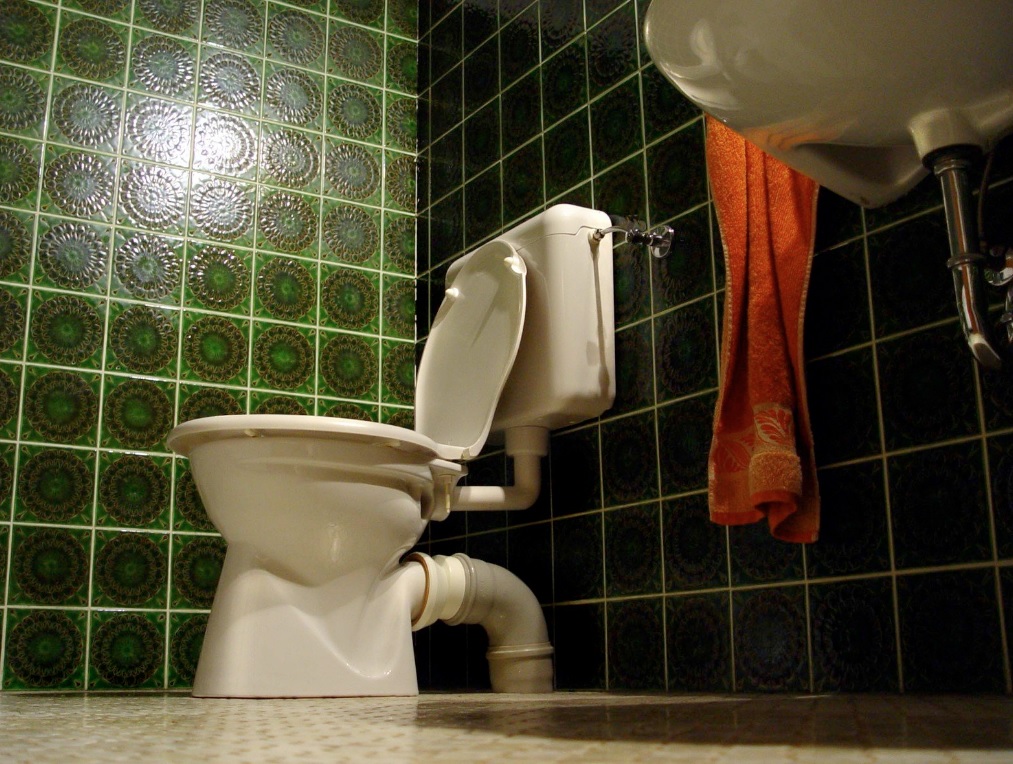Toilet wax rings may seem like simple hardware components, but they perform the all-important task of watertight bowl drain connections, preventing leaks and associated damages. Over the years, though, material compression plus caustic effluent exposures inevitably degrade wax integrity, causing structural cracks. Soon, flexible seals flatten entirely, permitting gases, liquids, and disease-spreading bacteria to migrate upwards from drainage pipes into homes, creating hazardous water damage and health risks.
This comprehensive 4,713-word homeowners guide covers everything required to assess toilet wax ring conditions to catch subtle initial deterioration signs earlier before outright failures. Understand why materials break down structurally, how correctly gauging situations early helps restore functionality affordable, and when leaving replacements to insured professionals protects the best long-term. Lives depend on secure drainage seals!
Wax Ring Essentials: Materials, Structures & Key Failure Modes
As homeowners make maintenance and upgrade decisions, understanding toilet wax ring construction and potential leakage risks, plus looking for them, empowers proper assessments and optimal monitoring of situations over years of usage.
Common Materials Used
Traditional toilet wax rings utilize natural beeswax formulas; however, most modern variations apply synthetic paraffin-based waxes or hybrid blends, balancing cost, durability, and malleability. Antimicrobial agents also help slow bacteria spread.
Gasket Structures Implemented
Wax rings commonly employ rounded tapered gasket shapes, allowing more outstanding surface confirmations as bolts tighten toilets firmly onto drain flanges underneath, creating secured seals in between. Some manufacturer designs incorporate additional inner plastic sleeves adding structural stability with flatter horizontal orientations.
Key Potential Failure Modes
The main leak pathway stems from wax compression forces plus chemical exposures, which degrade material integrity over decades. Eventually, cracking rings no longer maintain seals as shifting, vibrations, and pressure further erode the remaining functionality. Flat-out breaks or porous fractures both allow upward contamination.
Catching Early Deterioration Signs
Since wax rings reside out of sight under bowls, inspecting them directly proves difficult without formal toilet removals. But several conspicuous warning signs manifest across bathrooms permitting homeowners early critical intervention opportunities before primary leaks form:
Puddling Water Around the Toilet Base
While condensation, cracked tanks, loose connections, or worn flappers cause similar pooled water requiring isolation troubleshooting, sudden visibility after years likely indicates a failed seal. Monitoring accumulation after drying confirms wax ring culprits. Use caution when leaving issues since high leakage risks exist behind walls for a longer time. Address all moisture thoroughly.
Strong Foul Sewer Odors
Abrupt rotten-egg smells pervading bathrooms almost assuredly signal gases breaching porous drainage seals, requiring immediate resolutions given asphyxiation dangers in smaller enclosed spaces. Assume hazardous environments are thoroughly investigated appropriately before extensive room usage resumes.
Nearby Ceiling/Floor Damage
Chronic but overlooked leakage sometimes penetrates unseen into surrounding materials like subflooring or ceiling sheetrock, decaying joists, and framing over months before eventually destabilizing visible integrity after enough cumulative erosion. This indicates major overlooked failure pathways existed long before surface observations, meaning extensive hidden current damages are likely.
Professional Diagnostic & Replacement Guidance
Practically confirming wax ring failures requires formal toilet removal, carefully checking beneath with mirrors to identify cracks or compression flattening rings that no longer maintain seals across flange edges. So when the above signs validate, expert suggestions help:
Complete Toilet Replacements
For older units approaching 20 years where flanges show signs of damage, replacing entire sets modernizes drainage efficiency and bathroom aesthetics rather than just rings attempting further emergency fixes on deteriorating drain infrastructure.
Isolated Wax Ring Swaps
If existing bowls and flanges remain well-anchored and structurally sound otherwise, directly targeting just failed rings provides the most affordable fix. Measure dimensions precisely, selecting optimal wax density, width, wax-to-pipe sleeve ratios, and vertical height variables suiting your unique installations.
Innovative Elastomeric Flange Gaskets
Seeking more reliably permanent drainage solutions to avoid repeat wax ring servicing soon again, elastomeric plastic gaskets prove an easily installable substitute without needing the removal of well-functioning toilets. Being non-compressible and chemical resistant ensures maintained plumbing integrity for decades ahead watertight.
Cautionary Self-Repair Considerations
While attempting solo basic wax ring replacements remains moderately achievable for cautious homeowners, given extensive water damage risks from improperly re-seating toilets above drainage pipes using unforgiving new wax seals, most professionals recommend formally deferring full projects to qualified and licensed local plumbing outfits best handling liability threats introduced working adjacent to hazardous sewage lines. Their renovation expertise ultimately proves invaluable in securing operational functionality in bathrooms for years ahead, leak-free per proper code compliance. DIY bathroom only when fully understanding the flooding scope. Consider interior flooding insurance.
Why Sewer Leaks Require Swift Resolution
Beyond just easing homeowners’ minds by reinstating bathroom functionality finally without stubborn puddling issues, comprehensive professional repairs also provide invaluable protections much greater in scopes:
Mitigating Water Penetration Mold Risks
Unwanted moisture-fouling porous wall framing, insulation, or ceilings risks dangerous mold colonization within days. So, drying out all affected areas ultimately proves vital to limiting spore exposures, especially for those vulnerable occupants of spaces afterward.
Curbing Raw Sewage Contamination Dangers
With fecal bacteria concentrations measuring exponentially more than most rural farm fertilizer applications, allowing broken drainage seals risks serious infectious diseases like cholera, hepatitis A, giardiasis, etc. To inhabitants exposed, significantly younger immune-compromised groups. Reduce spread change habits immediately around bathrooms followed by thorough professional sterilization.
Preventing Hazardous Explosive Gas Buildup
The methane and hydrogen sulfide in unventilated sewer gas make it highly explosive, requiring immediate evacuation and ventilation before allowing any sparks nearby, including minimal switches or electronics. One small static arc can bring down buildings quickly. Gas detection metering is required to ensure safety.
The Step-By-Step Wax Ring Replacement Process
When deterioration signs positively indicate toilet wax ring replacements become necessary to revive watertight drainage functionality in bathrooms, understand that considerable skills and preparations are vital before starting projects reconfirming safe operations for years ahead. Follow these step-by-step guidelines to ensure smooth installations:
- Turn Off Water Supply Lines & Flush Toilets. Locate shutoff valves supplying toilets, then rotate handles perpendicularly, stopping flows completely before emptying residual tank levels. This prevents messy accidents later.
- Disconnect Supply Lines & Accessories With the water stopped, carefully detach flexible supply lines linking toilets to plumbing infrastructure without damaging compression fittings for reuse later. Also, disconnect any loose accessories like bolt caps, escutcheons, or decorative trim pieces.
- Extract Toilets & Scrape Old Sealant Away
- Now comes the challenging exertions required. Safely lift toilets detaching well from the floor flanges below without totally cracking the porcelain. With the bowls removed, thoroughly scrape all old wax, bolts, and debris before resetting anything.
- Dry & Clean Flange Contact Areas
- Further prepare ideal reset surfaces by extracting all moisture surrounding flanges using towels, followed by mild soap scrubbing and drying thoroughly with fans, accelerating processes before sealing again. Lingering moisture risks weak adhesion. Check flatness.
- Apply New Wax Ring & Lower Toilet Take the new, proper-sized wax ring carefully, lowering the entire gasket evenly flat onto clean flanges below, compressed only by toilet weights eventually secured above. Center porcelain carefully.
- Reconnect Accessories & Water With the toilet lowered to affirm ring alignments, finish by reattaching supply line couplings, bolt cap covers, and any previous loosely fastened decorative trim features. Restore water slowly, checking for leaks.
Avoiding Post-Replacement Leaks & Early Failures While project steps seem deceptively straightforward at first glance, much remains riding on precise execution details plumbers graduate perfecting gradually to deliver satisfactory outcomes consistently without reservations or warranty exclusions from installation mistakes commonly occurring still often:
- Improperly Sized Wax Rings Selections
- Ill-fitted shapes or widths prevent fully confirming perimeter seals around flanges. Measure twice and precisely match the circa floor openings below before buying wax rings that match visually above.
- Inadequate Ring Compressions
- If tightened insufficiently, failing pressing rings flattened fully, compression gaps still permit leakage buildups. However, overtightening risks porcelain cracking immediately or loose bolts later. Apply weight evenly.
- Misaligned Central Holes
- When lowering toilets, ensuring concentric wax ring holes align over flange tubes prevents off-center displacement strains, eventually freeing up working components.
Conclusion
By proactively monitoring subtle initial indications of wax ring deterioration through vigilantly spotting warning signs like unexpected moisture accumulating around toilet bases, foul sewage odors permeating bathrooms, or remote material water damages spreading on ceilings below, prudent homeowners can responsibly restore watertight drainage seals expertly before major leakage issues arise leading to exponentially messy and hazardous consequences.
Catching problems early and safely upgrading or replacing degraded rings protects families, properties, and infrastructure systems long-term from risks associated with chronic rainfall volumes of raw sewage stealthily flooding into wall voids and subflooring out of sight. What initially appears as merely inconvenient intermittent puddle cleanups stemming from overlooked clogged drains can escalate over the years into foundation-undermining damages costing a fortune if permitted to continue unconsciously.
Similarly, repeatedly ignoring the sudden nauseating smells of sulfur gas emissions slowly asphyxiating inhabitants, especially children in tightly-sealed bathrooms, irresponsibly courts serious health liabilities to those vulnerable when better options existed for preventing exposures and properly alerting ownership committees mandating systemic building repairs.
By treating wax ring deficiencies with urgency once identified and consulting insured professional plumbing services to guarantee appropriate seal replacements or fixture upgrades completed reliably to code, homeowners minimize further expenses overall through vigilant preventative maintenance while pragmatically securing essential bathroom functionality for years ahead.
In summary, never ignore leaks or unpleasant sewage odors around home toilets. Treat symptoms as early warning signs of impending disasters warranting inspection. Then, leverage experts appropriately to resolve repairable issues or budget-orderly system upgrades proactively, avoiding unnecessary indoor flooding, property decays, or medical crisis scenarios requiring future major restorations at great expenses down the road. An ounce of precaution today spares pound-scale migraines tomorrow! Stay healthy and informed.





